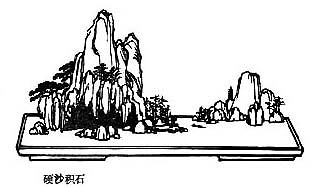Sun Zi 
 – The Art of War
– The Art of War
Chinese strategy explained : know yourself and the ennemy, use deception, spies, and "win with ease". Tr. Giles (en, annotated) and Amiot (fr).
Sunzi V. 13.
Thus one who is skillful at keeping the enemy on the move maintains deceitful appearances, according to which the enemy will act.1 He sacrifices something, that the enemy may snatch at it.
By holding out baits, he keeps him on the march; then with a body of picked men he lies in wait for him.2
Giles V.19,20.
Quelque grand, quelque merveilleux que tout cela paraisse, j'exige cependant quelque chose de plus encore de ceux qui gouvernent les troupes : c'est l'art de faire mouvoir à son gré les ennemis. Ceux qui le possèdent, cet art admirable, disposent de la contenance de leurs gens et de l'armée qu'ils commandent, de telle sorte qu'ils font venir l'ennemi toutes les fois qu'ils le jugent à propos ; ils savent faire des libéralités quand il convient, ils en font même à ceux qu'ils veulent vaincre : ils donnent à l'ennemi et l'ennemi reçoit, ils lui abandonnent et il vient prendre. Ils sont prêts à tout ; ils profitent de toutes les circonstances ; toujours méfiants ils font surveiller les subordonnés qu'ils emploient et, se méfiant d'eux-mêmes, ils ne négligent aucun moyen qui puisse leur être utile.
Amiot

The Art of War – Sun Zi V. 13. – Chinese off/on – Français/English
Alias Sun Tzu, Sun Wu, Sun Tse, Sunzi Bingfa, Souen Tseu, Souen Wou, 孫武.
The Book of Odes, The Analects, Great Learning, Doctrine of the Mean, Three-characters book, The Book of Changes, The Way and its Power, 300 Tang Poems, The Art of War, Thirty-Six Strategies
Welcome, help, notes, introduction, table.
Index – Contact – Top
